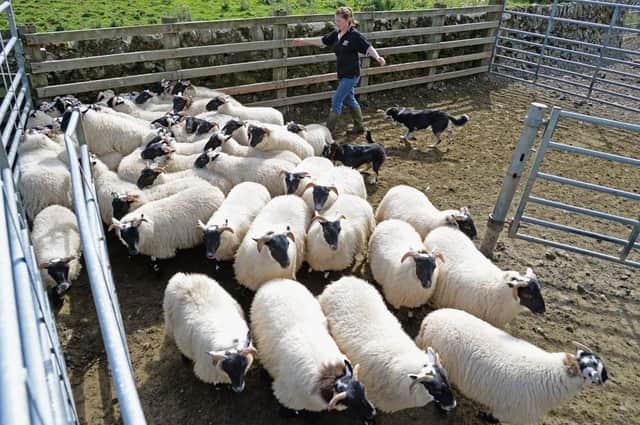Farming: Woolly thinking needed as falling prices take their toll - Andrew Arbuckle


Brought on by a blink or two of summer sunshine, she was on a knitting mission. One that involved knitting swimming trunks for myself and my two older brothers. We were going to the seaside and this meant we could swim in the sea if we had bathing costumes and, as was the case in those days, they were often woollen hand -knitted affairs.
On dry land, we looked quite smart although I wish my mother had not used the same size pattern on all three as I, the youngest and smallest, was required to hold onto my trunks even before we entered the water.
Advertisement
Hide AdAdvertisement
Hide AdOnce wet, the shorts sagged, and swimming became a battle on a number of fronts including the essential one of keeping afloat while holding on to my knitted trunks. I do not think it will ever become an Olympic sport, but you never know
While I did not appreciate wool’s properties in water, wearing a woolly jersey in winter was remembered fondly as was wearing a warm scarf and cozy gloves thanks to the generosity of a ewe or two.
Later in life, I learned to shear sheep on the family farm and after rolling up the fleeces, I trampled them into large jute sacks supplied by the Wool Marketing Board.
I recall the cheque coming in for the wool and while on our family farm it may not have paid the rent, as it was claimed to do on hill sheep units, the cheque’s worth was such that it was always quickly transferred into the bank.
At school, I learned how economically important wool had been to the national economy of the UK, creating boom times in areas such as the South of Scotland and the North of England. With sheep on the nearby hills and plentiful supplies of water to drive the machinery in the mills, fortunes were made thanks to the annual clip from the sheep sector. One legacy of those times are the grandiose municipal buildings in these wool towns.
So, what has happened that there are now headlines of wool being worth less than the cost of clipping.
One reason is that in the UK, carpet sales to the hotel and bar trade used to soak up lots of carpets just as the carpets soaked up spilled beer but that business vanished last year with Covid closing down the hospitality trade.
Sheep have not been informed that their wool is no longer in demand and since they cannot just stop producing wool, there are piles of it in the Wool Board depots.
What can be done to sort the problem?
Advertisement
Hide AdAdvertisement
Hide AdFor the past 70 years, sheep producers have benefitted from subsidies either in the form of headage payments or on area of land farmed.
Politicians are currently looking at a future support system and while sheep farmers might scream in pain at the thought, it might be worth thinking that, instead of giving all the support cash to the primary producer, why not give some of it to looking at new markets for wool. Some innovative thinking on new uses for wool might tackle the over supply problem
Seed corn money going into projects could well create new markets for products and the “pull through” effect of such a policy may well reward those at the beginning of the wool chain – the sheep farmer.
This is not a new idea as 100 years ago, the Highland Society held a competition on who could produce the best tractor. Entries flooded in and the end result was an increased interest in these new-fangled things called tractors. Then in the 1960s the Potato Marketing Board held demonstrations of harvesters as a way forward from hand picking. Again, this provided a “pull through” of new ideas
Developers of products made from wool would get financial support to increase demand and primary producers would benefit.
The only stipulation I would make is that I would not support a new generation of woollen swimming trunks as I am still traumatised by my initial experience
Comments
Want to join the conversation? Please or to comment on this article.